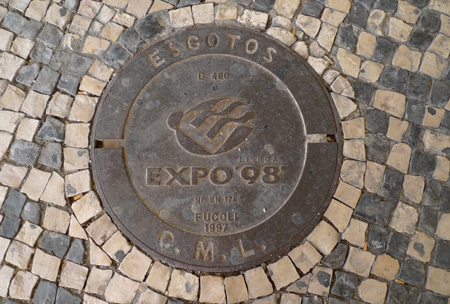
Twenty years ago today, Lisboa opened a specialized World’s Fair that completely altered the city’s landscape. Local government reclaimed an abandoned industrial zone to make way for pavilions, new housing, a new Metro line, a multi-modal train station & a second bridge across the Tejo River. Lisbon would never be the same.
Genesis
The idea for a large exposition to commemorate the 500th anniversary of Vasco da Gama’s 1498 voyage to India began to take shape in August 1989. A national committee proposed Oriente, Alcântara-Belém or the opposite bank of the Tejo River as a suitable location for a large-scale development. That same year, Portugal sent an official proposal to the Bureau International des Expositions in Paris. A lengthy process of approval ended in 1992 with “The Oceans, a Heritage for the Future” selected as the theme for Expo ’98 & a 5-km section of riverfront property in Oriente prepared for an extensive makeover. No doubt Lisbon officials saw the benefit an exposition could bring to their city as Sevilla went into overdrive for Expo ’92. By 1993, the logo & mascot of Expo ’98 (a surfer dude named Gil after explorer Gil Eanes) had been selected & construction began. As the June 1993 publication below states on the cover: only 1,826 days left!

Starting from scratch
The northeastern city limit of Lisbon had been originally developed as a hydroplane landing area, opening in 1942 along with the nearby airport built by Francisco Keil do Amaral. But hydroplanes fell out of use thanks to jet engines, & Oriente transformed into an industrial zone. In later decades, its gritty character became a blight for the city… maps of Lisbon often focused only on central sections & left out anything east of the Santa Apolónia train station (photo below from a 1973 guidebook):
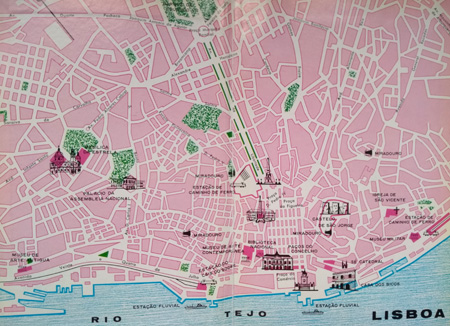
Clara Azevedo documented the area while development began (first two photos below) as did Paulo Carmo in 1995 (last photo):

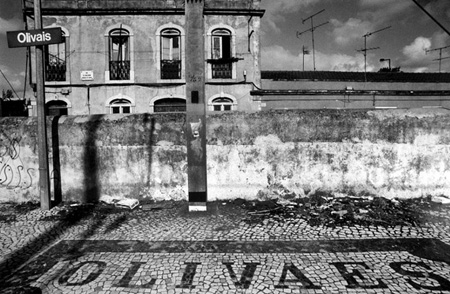
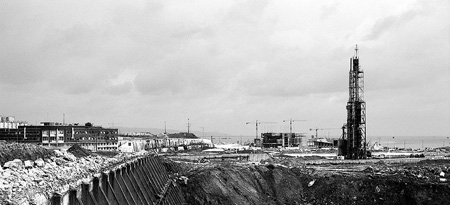
Since the area had been previously off the tourist circuit, public transportation became a primary concern. The 17-km Vasco da Gama bridge took three years to build at a cost of almost 900 million €. What a huge investment for Portugal in the 1990s! I can’t find figures for the original cost of the Metro’s new red line, built exclusively to bring people to the Expo. Let’s not forget the cost of the train-bus-Metro terminal designed by Santiago Calatrava. Seems like little expense was spared:
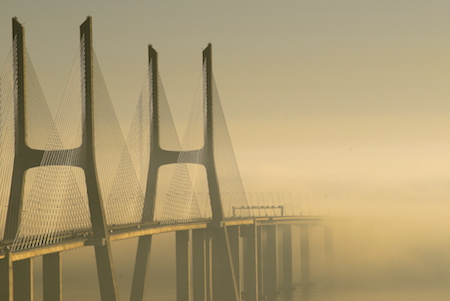
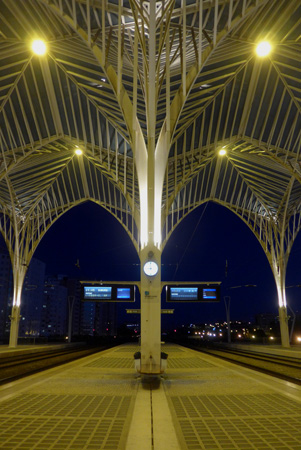
Developers had a lot to accomplish in a short period of time, & they also had to consider the future of Oriente after the Expo. Only one industrial bit survived: a gas tower that was refit with a spiral staircase. Part of long-term planning involved the creation of modern housing, like the tile-covered Edifício Ecran opened in 2000:
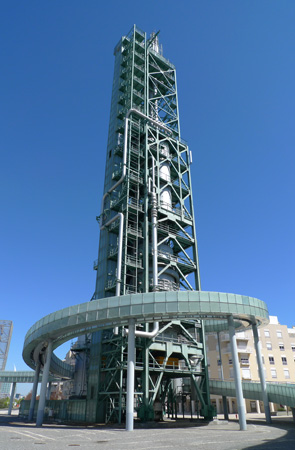
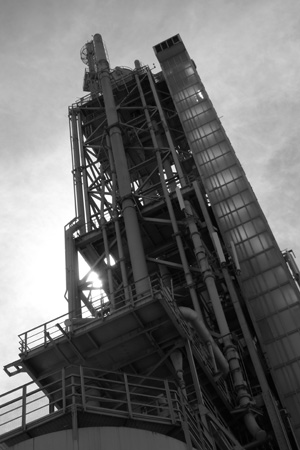
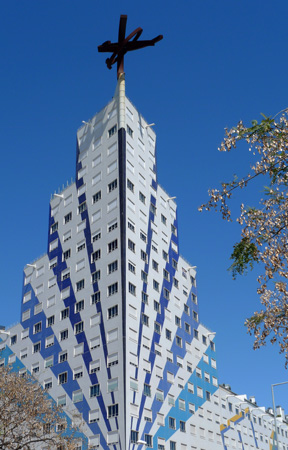
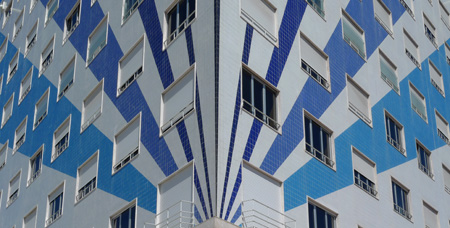
Reception
By the time Expo ’98 closed on September 30th, over 10 million visitors had seen the latest that Lisbon had to offer… a success, even if planners predicted a crowd of 15 million. I lived in Cádiz at the time & unfortunately didn’t make Expo ’98 a priority. Hey, it was my first time in Europe & there’s a lot to see! I finally visited Lisboa in November 1998 but couldn’t wander through the closed site, later to reopen months later as Parque das Nações. However my husband is a huge expo fan, so of course he went to Lisboa in 1998. Here’s the map he used:
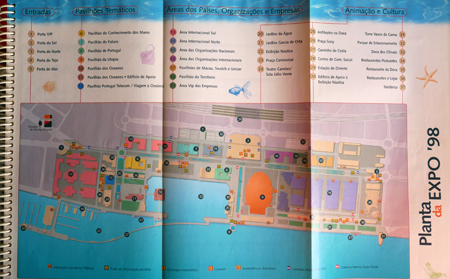
20 years on
As a brilliant article in O Corvo states, Expo ’98 planners had hoped that their riverside development project would spread to the rest of the city & revitalize important ties between the city & the Tejo. Slowly but surely their wish seems to be coming true. Just look at the Champalimaud Foundation, the MAAT, Cais do Sodré & the slow rebirth of Marvila, all of which bring people down to the river at different points of the waterfront.
Some original structures from Expo ’98 remain: the Pavilhão Atlântico is now the Altice Arena, the Pavilhão dos Oceanos continues to wow as the Oceanário (the largest aquarium in Europe), a cable car with views of the Tejo, water-spewing volcanos, & the Pavilhão do Futuro became a large casino. Around 20,000 people now live in the area, & some residents complain about the lack of maintenance for green space or the lack of illumination at night. Another criticism is that the Portugal pavilion by star architect Álvaro Siza Vieira is being underused. What’s for sure is that the Estação do Oriente needs some general upkeep.

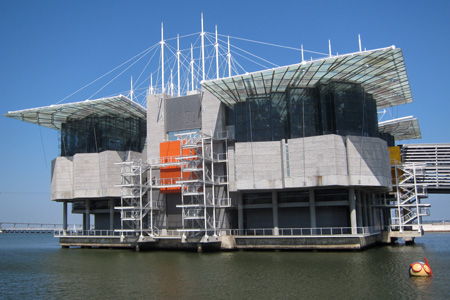
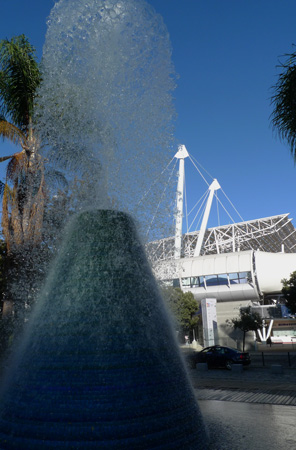
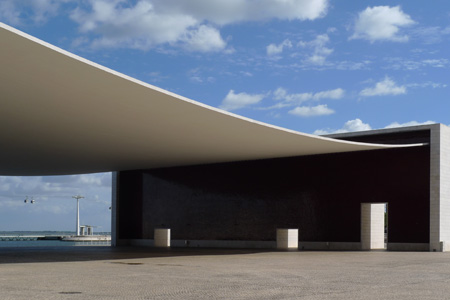
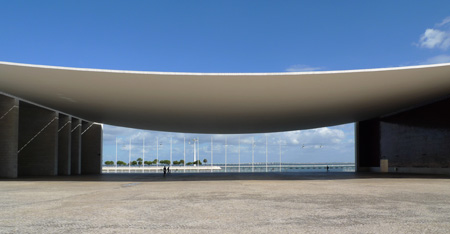

Observations
Looking back, Expo ’98 seems to be one of a series of attempts by Portugal to recover its world status since leaving dictatorship behind in 1974. Quick to join the EU in 1986, Expo ’98 planning soon followed as did the use of the € in 2000… all at a time when Lisbon’s city center had been neglected for decades. Now that much of Lisbon gleams again & Portugal has been rediscovered as a tourist destination, only time will tell if historians see Expo ’98 as one important step in an overall trend to recover some of Portugal’s international influence.
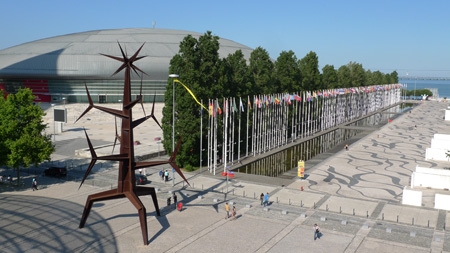
Obrigadíssimo to Bruno Manuel dos Anjos Marques Albano for all the original documentation uploaded to Issuu, my favorite source of Lisbon news O Corvo, & fellow long-time blogger Daniel Carrapa at a barriga de um arquitecto.